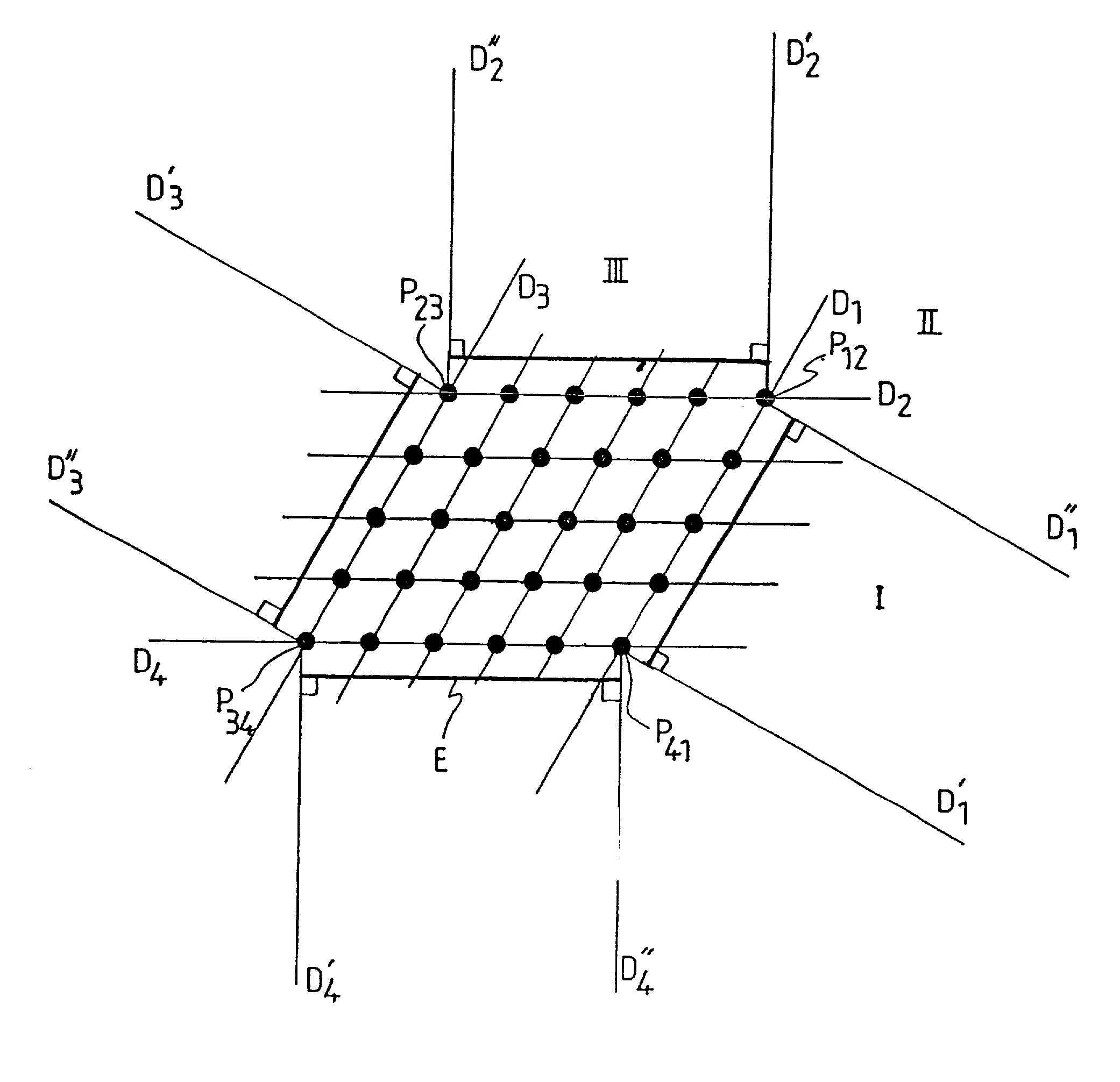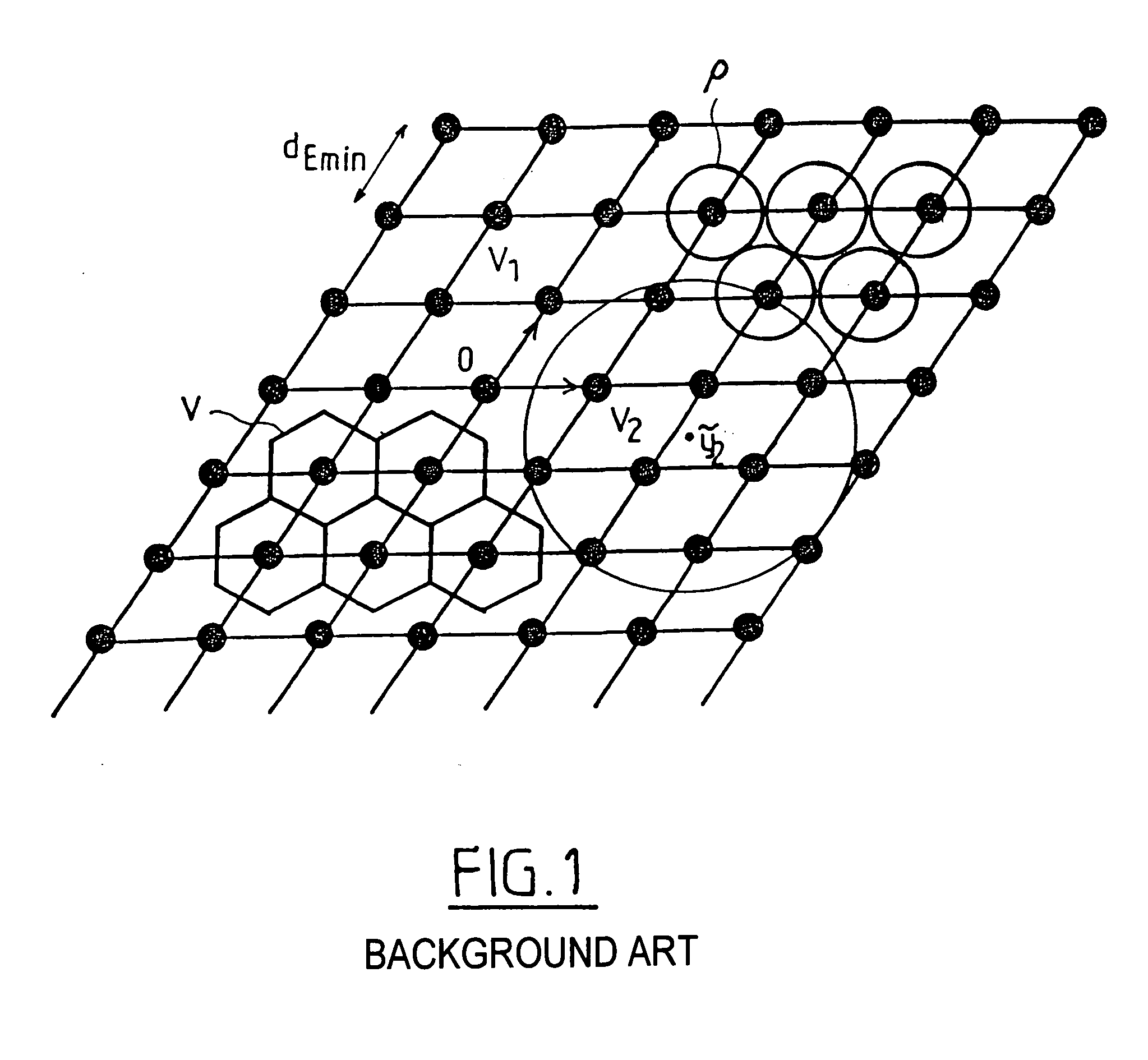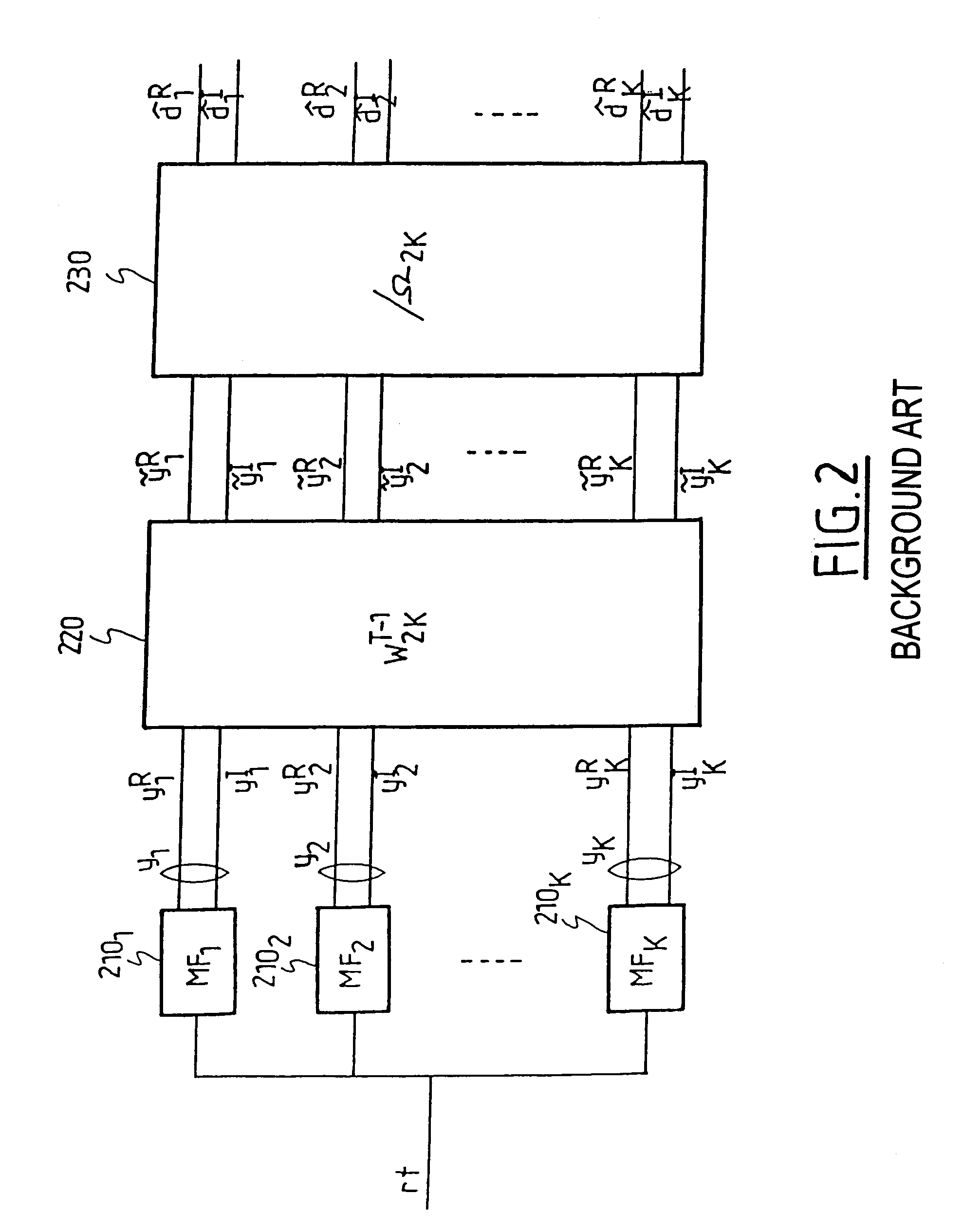Simplified method of detection by spheres when there is a low signal to noise ratio
a detection method and low signal to noise ratio technology, applied in the field of multiuser detection methods and devices, can solve the problems of high number of users, prohibitive complexity, and inoptimal methods, and achieve the effect of low signal to noise ratio and simplified detection methods
- Summary
- Abstract
- Description
- Claims
- Application Information
AI Technical Summary
Benefits of technology
Problems solved by technology
Method used
Image
Examples
Embodiment Construction
[0051]Consider once again a DS-CDMA telecommunication system with K users functioning in synchronous mode. As seen above, the detection of the symbols transmitted by the different users in the sense of the maximum likelihood can be reduced to a search amongst the points in a lattice (Ω2) for the closest neighbour of the point corresponding to the received signal.
[0052]In the case where the spreading sequences are real or more generally real multiples of the same complex number, it can be shown that the search can be carried out in a lattice with a dimension reduced to K. This is because the imaginary terms of the matrix R2 and consequently of the matrix M2 being zero, it is possible to boil down to a lattice of real points Λ of dimension K and of generator matrix M:
yR(i)=dR(i)M+nR(i) (15)
yI(i)=dI(i)M+nI(i) (16)
where yR(i),dR(i),nR(i) (or respectively yI(i),dI(i),nI(i)) are the vectors consisting of the real parts (or respectively of the imaginary parts) of the components of y(i), ...
PUM
 Login to View More
Login to View More Abstract
Description
Claims
Application Information
 Login to View More
Login to View More - R&D
- Intellectual Property
- Life Sciences
- Materials
- Tech Scout
- Unparalleled Data Quality
- Higher Quality Content
- 60% Fewer Hallucinations
Browse by: Latest US Patents, China's latest patents, Technical Efficacy Thesaurus, Application Domain, Technology Topic, Popular Technical Reports.
© 2025 PatSnap. All rights reserved.Legal|Privacy policy|Modern Slavery Act Transparency Statement|Sitemap|About US| Contact US: help@patsnap.com



